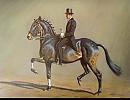Contact Seller
Studio RT Ltd
Tel01622 812556Please quote Antiques Atlas.


 Painting depicting the Blue Grotto of Capri.
Painting depicting the Blue Grotto of Capri.
 E. St. John (F. Catano) Watercolour Arab Street
E. St. John (F. Catano) Watercolour Arab Street
 Late Regency silhouette of a lady
Late Regency silhouette of a lady
 James Cassie, Herring Fleet Kincardineshire Coast
James Cassie, Herring Fleet Kincardineshire Coast
 Watercolour Marine Cornwall Rocky Cliff Shoreline
Watercolour Marine Cornwall Rocky Cliff Shoreline
 London Trader by E. Owen Jennings (1899-1985)
London Trader by E. Owen Jennings (1899-1985)
 The Rose Pavilion Russia Watercolour dated 1849
The Rose Pavilion Russia Watercolour dated 1849
 Portrait of Mary Georgina Ormsby-Gore (1851-1937)
Portrait of Mary Georgina Ormsby-Gore (1851-1937)
 Set of 4, Caran Rouge watercolours
Set of 4, Caran Rouge watercolours
 Berwick upon Tweed William Fergie
Berwick upon Tweed William Fergie
 Watercolor Italian Lake Robert George Talbot Kelly
Watercolor Italian Lake Robert George Talbot Kelly
 Giovanni Barbaro 1864-1915 Still Life Watercolour
Giovanni Barbaro 1864-1915 Still Life Watercolour
Non UK callers :
+44 1622 812556
19th c.Oval Watercolour Portrait aft.Vigee Le Brun


We are pleased to offer this very attractive 19th Century oval watercolour after the original oil painting by Elisabeth Vigee Le Brun, although in reverse and with slightly different colouring, particularly of Julie's dress. This watercolour is by an unknowm artist and there are no clues on the back of the paper. The portrait depicts Madame Le Brun with her arms clasped around her daughter, Jeanne Lucie Louise (1780-1819) who she called Julie. She is wearing classical draperies with a terracotta sash, with a matching ribbon in her hair. The original was painted in 1789 and is in The Louvre in Paris.
Élisabeth Louise Vigée Le Brun (16 April 1755 – 30 March 1842), also known as Madame Lebrun or Madame Le Brun, was a prominent French portrait painter of the late eighteenth century.
Her artistic style is generally considered part of the aftermath of Rococo with elements of an adopted Neoclassical style. Her subject matter and color palette can be classified as Rococo, but her style is aligned with the emergence of Neoclassicism. Vigée Le Brun created a name for herself in Ancien Regime society by serving as the portrait painter to Marie Antoinette. She enjoyed the patronage of European aristocrats, actors, and writers, and was elected to art academies in ten cities.
In 1787, she caused a minor public scandal when her Self-Portrait with Her Daughter Julie (1787) was exhibited at the Salon of 1787 showing her smiling and open-mouthed, which was in direct contravention of traditional painting conventions going back to antiquity. The court gossip-sheet Mémoires secrets commented: 'An affectation which artists, art-lovers and persons of taste have been united in condemning, and which finds no precedent among the Ancients, is that in smiling, [Madame Vigée LeBrun] shows her teeth.' In light of this and her other Self-Portrait with Her Daughter Julie (1789), Simone de Beauvoir dismissed Vigée Le Brun as narcissistic in The Second Sex (1949): 'Madame Vigée-Lebrun never wearied of putting her smiling maternity on her canvases.'
As her career blossomed, Vigée Le Brun was granted patronage by Marie Antoinette. She painted more than 30 portraits of the queen and her family, leading to the common perception that she was the official portraitist of Marie Antoinette. At the Salon of 1783, Vigée Le Brun exhibited Marie-Antoinette in a Muslin Dress (1783), sometimes called Marie-Antoinette en gaulle, in which the queen chose to be shown in a simple, informal white cotton garment. The resulting scandal was prompted by both the informality of the attire and the queen's decision to be shown in that way. Vigée Le Brun's later Marie Antoinette and Her Children (1787) was evidently an attempt to improve the queen's image by making her more relatable to the public, in the hopes of countering the bad press and negative judgments that the queen had recently received
In October 1789, after the arrest of the royal family during the French Revolution, Vigée Le Brun fled France with her young daughter, Julie. Her husband, who remained in Paris, claimed that Vigée Le Brun went to Italy 'to instruct and improve herself' but she certainly feared for her own safety. In her 12-year absence from France, she lived and worked in Italy (1789–1792), Austria (1792–1795), Russia (1795–1801), and Germany (1801).
After a sustained campaign by her ex-husband and other family members to have her name removed from the list of counter-revolutionary émigrés, Vigée Le Brun was finally able to return to France in January 1802. She travelled to London in 1803, to Switzerland in 1807, and to Switzerland again in 1808. In Geneva, she was made an honorary member of the Société pour l'Avancement des Beaux-Arts
Her daughter predeceased her, dying in 1819, but Madame Le Brun died in Paris on 30th March, 1842 at the age of 86, although she was buried in the cemetery of Louveciennes in the Ile de France, where sho owned a house. Her epitaph reads: Here, at last, I rest. (Ici, enfin, je repose)
Vigée Le Brun created some 660 portraits and 200 landscapes. In addition to many works in private collections, her paintings are owned by major museums, such as the Louvre, Hermitage Museum, National Gallery in London, Metropolitan Museum of Art in New York, and many other collections in continental Europe and the United States.
The watercolour is framed in a gilt brass oval frame with ribbon and bow surmount and original convex glass. The back is also gilt brass. It will be supplied with new brass picture wire and will be ready to hang.
Image size: 16 x 13 inches - 40.7cm x 33cm
Frame size: 19 1/4 x 14 1/4 inches - 48.9cm x 36.2cm
Medium: Watercolours with fum arabic and pencil
Condition: Very good. There is no foxing or fading. The frame is in very good condition.
SellerStudio RT Ltd
View all stock from
Studio RT Ltd

 Private Art dealer
Private Art dealer
By appointment only
Kent
England, UK
Tel : 01622 812556
Non UK callers : +44 1622 812556
Élisabeth Louise Vigée Le Brun (16 April 1755 – 30 March 1842), also known as Madame Lebrun or Madame Le Brun, was a prominent French portrait painter of the late eighteenth century.
Her artistic style is generally considered part of the aftermath of Rococo with elements of an adopted Neoclassical style. Her subject matter and color palette can be classified as Rococo, but her style is aligned with the emergence of Neoclassicism. Vigée Le Brun created a name for herself in Ancien Regime society by serving as the portrait painter to Marie Antoinette. She enjoyed the patronage of European aristocrats, actors, and writers, and was elected to art academies in ten cities.
In 1787, she caused a minor public scandal when her Self-Portrait with Her Daughter Julie (1787) was exhibited at the Salon of 1787 showing her smiling and open-mouthed, which was in direct contravention of traditional painting conventions going back to antiquity. The court gossip-sheet Mémoires secrets commented: 'An affectation which artists, art-lovers and persons of taste have been united in condemning, and which finds no precedent among the Ancients, is that in smiling, [Madame Vigée LeBrun] shows her teeth.' In light of this and her other Self-Portrait with Her Daughter Julie (1789), Simone de Beauvoir dismissed Vigée Le Brun as narcissistic in The Second Sex (1949): 'Madame Vigée-Lebrun never wearied of putting her smiling maternity on her canvases.'
As her career blossomed, Vigée Le Brun was granted patronage by Marie Antoinette. She painted more than 30 portraits of the queen and her family, leading to the common perception that she was the official portraitist of Marie Antoinette. At the Salon of 1783, Vigée Le Brun exhibited Marie-Antoinette in a Muslin Dress (1783), sometimes called Marie-Antoinette en gaulle, in which the queen chose to be shown in a simple, informal white cotton garment. The resulting scandal was prompted by both the informality of the attire and the queen's decision to be shown in that way. Vigée Le Brun's later Marie Antoinette and Her Children (1787) was evidently an attempt to improve the queen's image by making her more relatable to the public, in the hopes of countering the bad press and negative judgments that the queen had recently received
In October 1789, after the arrest of the royal family during the French Revolution, Vigée Le Brun fled France with her young daughter, Julie. Her husband, who remained in Paris, claimed that Vigée Le Brun went to Italy 'to instruct and improve herself' but she certainly feared for her own safety. In her 12-year absence from France, she lived and worked in Italy (1789–1792), Austria (1792–1795), Russia (1795–1801), and Germany (1801).
After a sustained campaign by her ex-husband and other family members to have her name removed from the list of counter-revolutionary émigrés, Vigée Le Brun was finally able to return to France in January 1802. She travelled to London in 1803, to Switzerland in 1807, and to Switzerland again in 1808. In Geneva, she was made an honorary member of the Société pour l'Avancement des Beaux-Arts
Her daughter predeceased her, dying in 1819, but Madame Le Brun died in Paris on 30th March, 1842 at the age of 86, although she was buried in the cemetery of Louveciennes in the Ile de France, where sho owned a house. Her epitaph reads: Here, at last, I rest. (Ici, enfin, je repose)
Vigée Le Brun created some 660 portraits and 200 landscapes. In addition to many works in private collections, her paintings are owned by major museums, such as the Louvre, Hermitage Museum, National Gallery in London, Metropolitan Museum of Art in New York, and many other collections in continental Europe and the United States.
The watercolour is framed in a gilt brass oval frame with ribbon and bow surmount and original convex glass. The back is also gilt brass. It will be supplied with new brass picture wire and will be ready to hang.
Image size: 16 x 13 inches - 40.7cm x 33cm
Frame size: 19 1/4 x 14 1/4 inches - 48.9cm x 36.2cm
Medium: Watercolours with fum arabic and pencil
Condition: Very good. There is no foxing or fading. The frame is in very good condition.
Price The price has been listed in British Pounds.
Conversion rates as of 20/JUN/2024. Euro & Dollar prices will vary and should only be used as a guide.
Always confirm final price with dealer. Sold. Sold prices are confidential, so please don't ask.
Period Late 19th Century Antiques
Material Paper
Origin European
Item code as237a2149
Status Sold
£0 
$0.00 
€0.00 

$

€

Conversion rates as of 20/JUN/2024. Euro & Dollar prices will vary and should only be used as a guide.
Always confirm final price with dealer. Sold. Sold prices are confidential, so please don't ask.
View all stock from
Studio RT Ltd

 Private Art dealer
Private Art dealerBy appointment only
Kent
England, UK
Tel : 01622 812556
Non UK callers : +44 1622 812556
You may also be interested in
 Painting depicting the Blue Grotto of Capri.
Painting depicting the Blue Grotto of Capri.
 E. St. John (F. Catano) Watercolour Arab Street
E. St. John (F. Catano) Watercolour Arab Street
 Late Regency silhouette of a lady
Late Regency silhouette of a lady
 James Cassie, Herring Fleet Kincardineshire Coast
James Cassie, Herring Fleet Kincardineshire Coast
 Watercolour Marine Cornwall Rocky Cliff Shoreline
Watercolour Marine Cornwall Rocky Cliff Shoreline
 London Trader by E. Owen Jennings (1899-1985)
London Trader by E. Owen Jennings (1899-1985)
 The Rose Pavilion Russia Watercolour dated 1849
The Rose Pavilion Russia Watercolour dated 1849
 Portrait of Mary Georgina Ormsby-Gore (1851-1937)
Portrait of Mary Georgina Ormsby-Gore (1851-1937)
 Set of 4, Caran Rouge watercolours
Set of 4, Caran Rouge watercolours
 Berwick upon Tweed William Fergie
Berwick upon Tweed William Fergie
 Watercolor Italian Lake Robert George Talbot Kelly
Watercolor Italian Lake Robert George Talbot Kelly
 Giovanni Barbaro 1864-1915 Still Life Watercolour
Giovanni Barbaro 1864-1915 Still Life Watercolour







